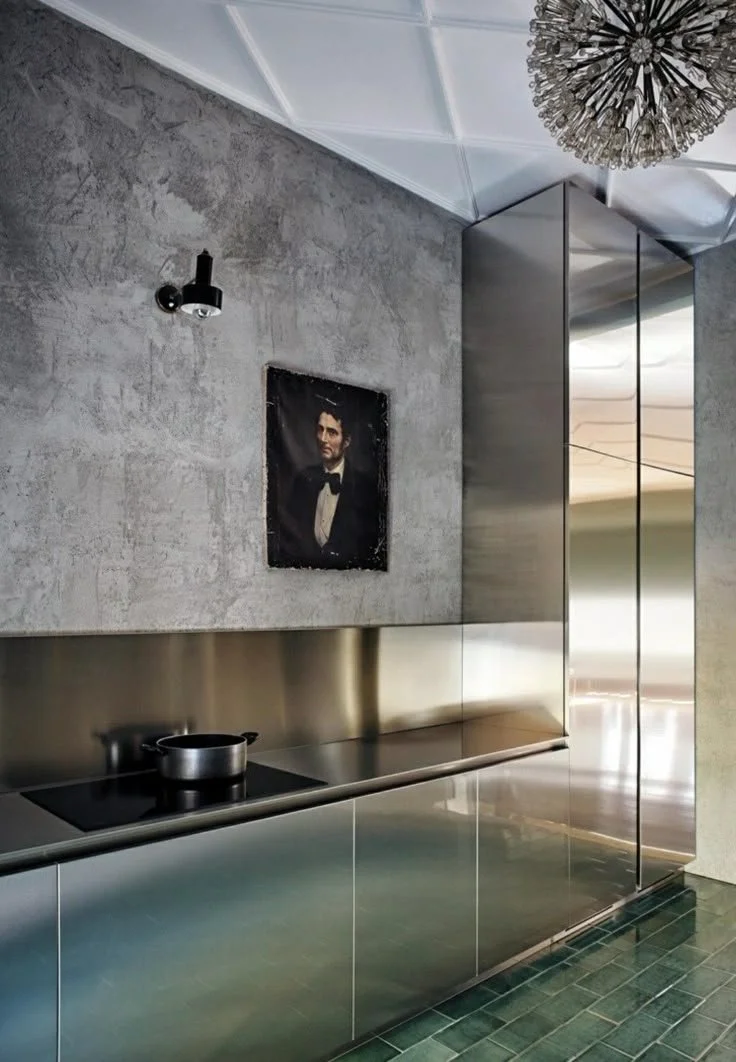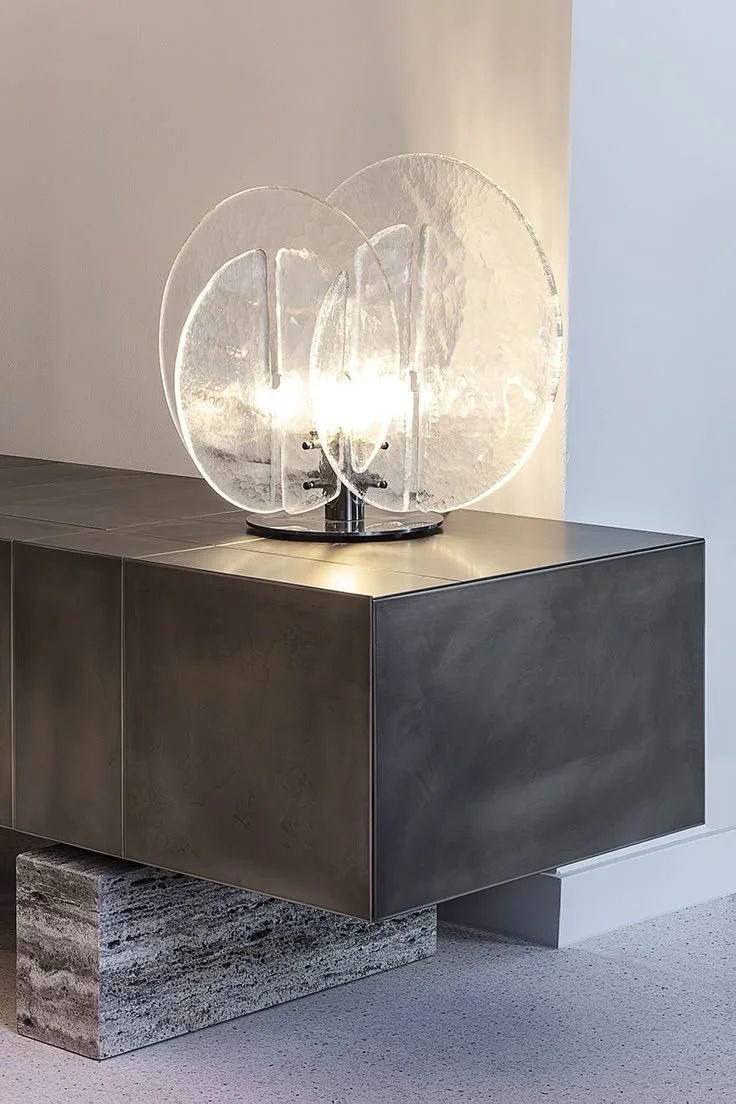Stainless Steel: A Timeless Classic in Modern Design
There are materials, and then there are icons. Stainless steel is both. More than a construction essential or kitchen staple, it’s a design philosophy—clean, confident, and enduring. Born from industrial innovation and embraced by the world’s leading architects and designers, stainless steel has transcended its utilitarian roots to become a symbol of refined strength.
Whether shimmering on a skyscraper, anchoring a minimalist kitchen, or elevating the precision of a luxury watch, stainless steel remains an exemplar of balance: function meets beauty, durability meets elegance. This blog explores its rich legacy, evolving relevance, and the subtle yet powerful role it plays in shaping the modern world.
Image source: @Irma
Key Takeaways
Timeless Versatility: Stainless steel is a material that adapts equally at home in futuristic skyscrapers, industrial interiors, or minimalist product design.
Durability with Style: Known for its corrosion resistance and strength, stainless steel provides lasting value without compromising aesthetics.
Architectural Impact: From the Chrysler Building to the Helix Bridge, stainless steel has enabled architectural innovation while maintaining structural integrity.
Interior Design Essential: Stainless steel adds a sleek, light-reflecting touch to kitchens, bathrooms, and custom furniture, enhancing spatial perception.
Eco-Conscious Choice: With its full recyclability and long life cycle, stainless steel supports sustainable, circular design without sacrificing performance.
Cultural Icon: Beyond function, stainless steel has become a visual and tactile language of modernity, clarity, and craftsmanship.
Where Function Meets Elegance
Few materials have remained as relevant and enduring as stainless steel. Its smooth, reflective surface offers not only visual clarity but also a quiet strength that continues to inspire architects, designers, and makers across the globe.
First developed in the early 20th century, stainless steel revolutionised modern design by combining corrosion resistance with polished appeal. It became synonymous with progress, precision, and permanence a perfect marriage of science and style.
Architecture and the Stainless Statement
One of the earliest and most iconic uses of stainless steel in architecture is found in the Chrysler Building’s Art Deco spire, completed in 1930. Since then, the material has shaped countless landmarks—from the soaring Gateway Arch in St. Louis to the dynamic Helix Bridge in Singapore.
Favoured for its resilience and minimal maintenance, stainless steel is used in façades, roofing, canopies, structural frames, and architectural sculptures. It enables form to follow function, allowing daring designs without compromising durability. Its longevity, low lifecycle cost, and resistance to harsh environments make it a staple in both commercial and civic architecture.
The Interior Appeal: Polished, Practical, and Personal
Source: @henge
In the world of interiors, stainless steel serves as both a striking centrepiece and a subtle supporting act. In kitchens, it offers hygienic practicality—gracing countertops, sinks, appliances, and rangehoods with modern simplicity. In bathrooms, its resistance to rust and tarnish makes it an ideal material for tapware and fittings.
Designers often pair stainless steel with organic textures—timber, linen, natural stone—to create contrast and warmth. The material plays with light and scale, reflecting and refracting its surroundings to enhance space and clarity. Whether used in bespoke furniture, cabinet handles, or sculptural lighting, stainless steel adds a sense of understated luxury.
Versatility in Object and Product Design
Stainless steel's relevance extends beyond architecture and interiors into product and industrial design. It is the material of choice for objects that require longevity, performance, and aesthetic refinement.
In luxury watches, kitchenware, surgical instruments, and personal accessories, stainless steel merges strength with artistry. Its non-reactive properties make it ideal for food preparation and medical environments, while its sleek finish enhances form in daily-use items. It is equally suited to sculptural design as it is to mass production, striking a balance between innovation and timeless appeal.
Sustainability and Circular Design
In an era increasingly defined by environmental responsibility, stainless steel offers a sustainable solution. It is 100% recyclable with no degradation in quality, and a significant percentage of stainless steel products today contain recycled content.
Its long lifespan reduces the need for frequent replacement, lowering overall resource consumption. For designers and builders focused on circular design and minimal environmental impact, stainless steel stands out not only for its performance but for its eco-conscious potential.
A Material That Transcends Time
At once industrial and elegant, enduring and adaptive, stainless steel continues to serve as a material of substance and style. Whether in the soaring lines of a monument or the fine edge of a kitchen knife, it remains deeply woven into the narrative of contemporary design.
Its beauty doesn’t fade—it evolves. Through time, trend, and innovation, stainless steel persists. A classic in every sense of the word.
Conclusion
In the evolving language of design, stainless steel continues to speak with quiet authority. It is a material that has transcended its industrial origins to become a symbol of modern refinement—resilient, responsible, and remarkably versatile. Whether used as a bold architectural statement or as a subtle interior accent, stainless steel brings clarity, strength, and sophistication to any space it touches.
Its appeal lies not just in how it looks, but in what it represents: longevity, innovation, and timeless design. As we move toward more conscious, considered spaces, stainless steel remains a trusted companion, anchoring our environments with purpose and reflecting the values of form, function, and enduring beauty.
Final Thoughts
Ready to elevate your home? At Studio A-N, our experts are ready and pleased to guide you on this journey, helping you realise your vision every step of the way. Specialising in creating considered residential, hotel, and nationally acclaimed commercial spaces, we embrace the beauty of simplicity to deliver designs featuring clean lines, minimal finishes, and timeless, organic palettes.
Feel free to explore our projects to inspire your next home redesign, and stay updated about the newest trends by signing up for our newsletter. We invite you to follow us on our Instagram and Pinterest accounts to stay abreast of our latest insights. For those eager to create enchanting spaces, uncover our selection of meticulously curated furniture collections here.
If you have any questions or are ready to create a space that truly feels like yours, contact our expert team — we look forward to partnering with you on this exciting design adventure.
SOURCES:
Outokumpu Group. “History of Stainless Steel.”
ArchDaily. “Chrysler Building and Stainless Steel in Art Deco.”
World Stainless Association. “Why Stainless Steel?”
Dezeen. “Why Stainless Steel Is Back in Vogue.”
Fiell, C. & Fiell, P. Industrial Design A–Z. Taschen, 2019
ISSF. Stainless Steel Sustainability Report 2021.


